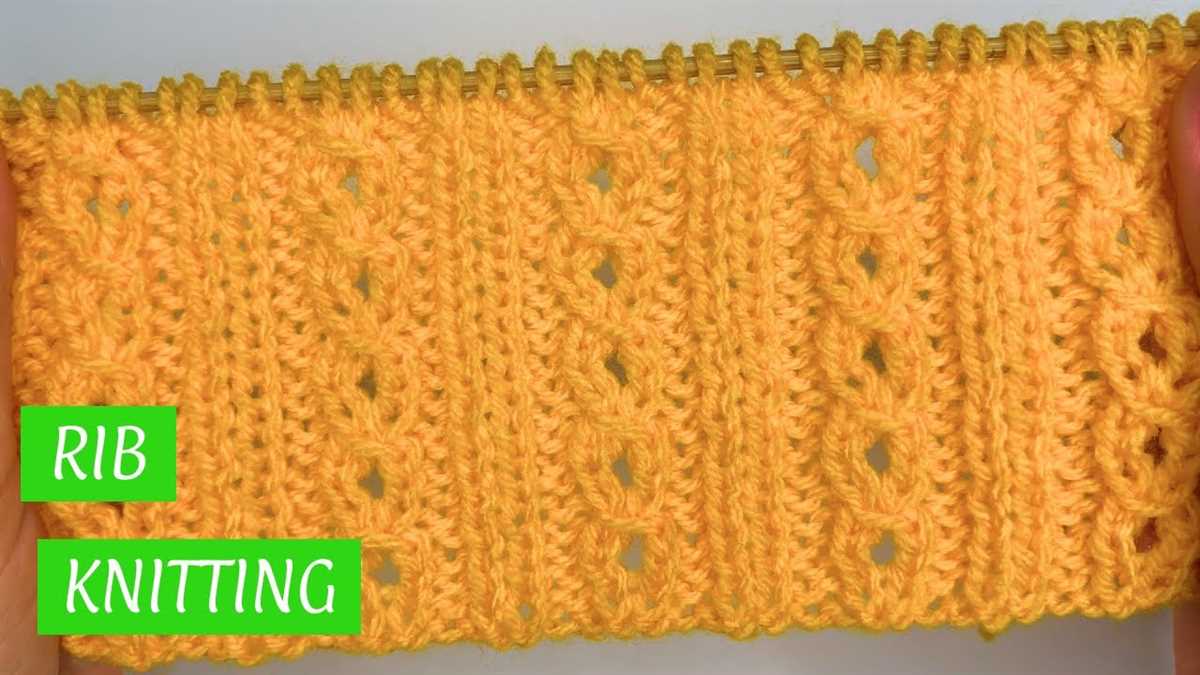
Are you interested in learning how to knit but don’t know where to start? Look no further! In this article, we will introduce you to some easy first knitting patterns that are perfect for beginners. Knitting is a wonderful hobby that allows you to create your own cozy accessories and garments. With a little practice and patience, you will be able to knit beautiful items to keep you warm and stylish.
When starting out with knitting, it’s important to choose a pattern that matches your skill level. It can be discouraging to dive into a complex pattern right away, so it’s best to start with something simple. We have gathered a collection of easy knitting patterns that are beginner-friendly and will help you build your knitting skills.
One of the easiest patterns for beginners is a simple scarf. A scarf is a classic knitting project that allows you to practice basic knit stitches and work on your tension. Additionally, scarves make great gifts for friends and family. You can choose a soft and cozy yarn in your favorite color and create a beautiful accessory to keep you warm during the colder months.
Why choose easy first knitting patterns?
Knitting is a popular craft that allows you to create beautiful and practical items using yarn and needles. Whether you are a beginner or an experienced knitter, starting with easy first knitting patterns can be a great way to build your skills and confidence.
One of the main advantages of choosing easy first knitting patterns is that they are designed specifically for beginners. These patterns typically use basic stitches and techniques, making them easy to follow and understand. This can help you learn the fundamentals of knitting, such as how to cast on, knit, purl, and bind off, without feeling overwhelmed. By starting with simple patterns, you can gradually build your skills and progress to more complex projects.
Another reason to choose easy first knitting patterns is that they are often quick to complete. These patterns are typically smaller in size and require less time and commitment compared to more intricate designs. This can be particularly appealing if you are new to knitting and want to see results relatively quickly. Completing smaller projects can also give you a sense of accomplishment and motivation to continue knitting.
Additionally, easy first knitting patterns often use basic yarns and materials that are readily available. This means you don’t have to worry about spending a lot of money on fancy yarns or tools when you are just starting out. It also allows you to focus on mastering the basic techniques and stitches before moving on to more advanced projects that may require specialized materials.
Overall, choosing easy first knitting patterns is a great way to get started on your knitting journey. These patterns are designed with beginners in mind, offering clear instructions and simpler designs. By starting with easier projects, you can build your skills, gain confidence, and create beautiful items to enjoy or gift to others.
Benefits of starting with easy knitting patterns
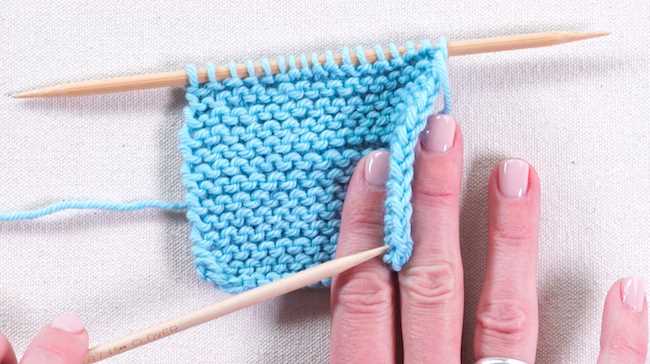
Learning how to knit can be an exciting and rewarding experience. It allows you to create unique pieces of clothing and accessories, and is a great way to relax and unwind. If you are just starting out with knitting, it is important to choose easy knitting patterns to help build your skills and confidence. There are several benefits to starting with easy knitting patterns:
1. Learn the basics: Easy knitting patterns are designed to teach you the fundamental techniques and stitches that are used in more complex patterns. By starting with these simple projects, you can master the basics of knitting, such as casting on, knitting, purling, and binding off.
2. Build confidence: Starting with easy knitting patterns allows you to practice your skills and build confidence in your abilities. As you complete more projects, you will become more comfortable with different stitches and techniques, and you will feel more confident taking on more challenging patterns in the future.
3. Quick results: Easy knitting patterns are typically smaller and require less time to complete compared to more intricate projects. This means you can see the results of your work sooner, which can be motivating and encouraging. As you complete each project, you will gain a sense of accomplishment and be motivated to continue learning and improving.
4. Customize and experiment: Easy knitting patterns often leave room for customization and experimentation. Once you have mastered the basic techniques, you can start adding your own personal touches to the projects, such as using different yarns, colors, or stitch patterns. This allows you to develop your own unique style and create one-of-a-kind pieces.
By starting with easy knitting patterns, you can lay a solid foundation for your knitting journey and set yourself up for success. So grab your knitting needles and dive into your first project – you’ll be amazed at what you can create!
Building confidence and skills through simple projects
Learning to knit can be an exciting and rewarding journey. However, it can also feel intimidating for beginners, especially when faced with complex patterns or techniques. That’s why starting with easy knitting projects is a great way to build confidence and develop essential skills.
One of the benefits of starting with simple knitting patterns is that they allow beginners to focus on mastering basic techniques. By working on straightforward projects, such as a basic scarf or dishcloth, beginners can learn and practice fundamental skills like casting on, knitting, purling, and binding off. These foundational stitches and techniques form the building blocks for more complex patterns and projects, so it’s essential to develop a solid understanding of them.
Moreover, simple knitting projects provide immediate gratification and a sense of accomplishment. Seeing progress and completion of a project, even a small one, can be incredibly motivating and boost confidence. Beginners can take pride in their finished objects and use them as tangible proof of their growing knitting skills.
Another advantage of starting with easy projects is that they typically require less time and materials. This makes them more affordable and accessible, allowing beginners to experiment and make mistakes without feeling overwhelmed or discouraged. As beginners gain confidence and improve their skills, they can gradually take on more complex patterns and invest in more advanced projects.
- Choosing simple knitting projects with clear and detailed instructions is essential for beginners. Patterns labeled as “easy” or “beginner-friendly” are typically designed to be straightforward and manageable for those just starting.
- Additionally, seeking resources such as online tutorials, knitting classes, or joining a knitting group can provide the necessary guidance and support to overcome challenges and learn new techniques.
- By starting with easy knitting projects, beginners can enjoy the process of learning, develop their skills, and gain the confidence needed to take on more advanced projects in the future.
Essential knitting tools for beginners
Knitting is an enjoyable and rewarding hobby that allows you to create beautiful handmade items. If you’re just starting out on your knitting journey, it’s important to have the right tools to make the process easier and more enjoyable. Here are some essential knitting tools for beginners:
1. Knitting Needles
The most important tool in knitting is, of course, the knitting needles. There are different types of needles available, such as straight needles, circular needles, and double-pointed needles. For beginners, it’s recommended to start with a pair of straight needles, as they are easier to handle.
2. Yarn
Another essential tool for knitting is yarn. It’s important to choose a yarn that is suitable for beginners, such as a medium-weight yarn made from cotton or acrylic. Avoid using yarns that are too slippery or too thick, as they can make it more difficult to learn the basic knitting techniques.
3. Scissors
A good pair of scissors is essential for cutting yarn and trimming any loose ends. Look for scissors that are sharp and comfortable to hold. Make sure to keep them handy while knitting, as you will need them frequently.
4. Stitch Markers
Stitch markers are small plastic or metal rings that help you keep track of your stitches. They are especially useful when working on more complex patterns or when knitting in the round. They can be easily placed on the needles to mark specific stitches or sections of the project.
5. Tapestry Needle
A tapestry needle, also known as a yarn needle or darning needle, is used for sewing in loose ends and finishing off your knitting projects. Look for a needle with a large eye that can easily accommodate the yarn. It’s also helpful to have a blunt tip to prevent accidentally splitting the yarn.
6. Measuring Tape
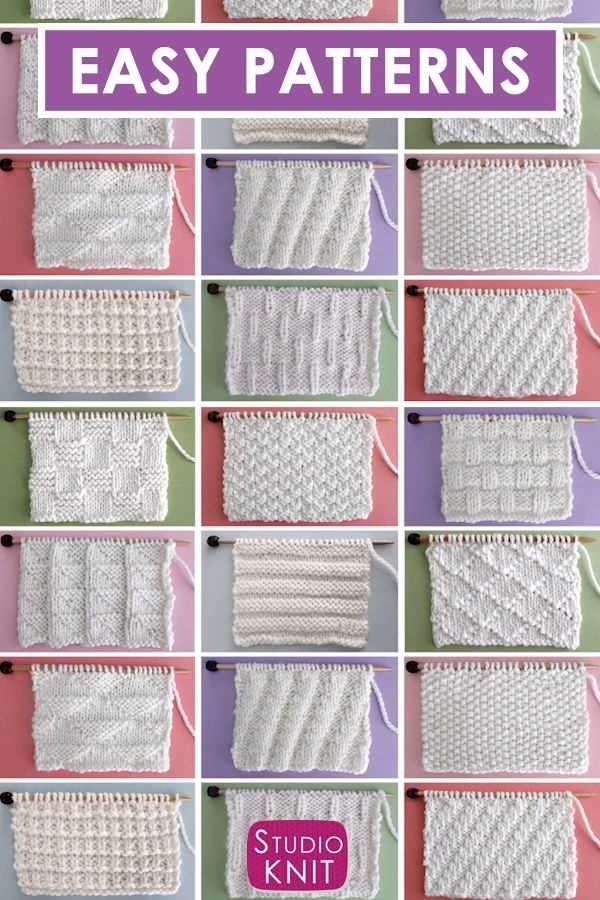
A measuring tape is essential for checking the dimensions of your knitting projects. It helps ensure that your finished item will be the correct size. Look for a flexible measuring tape that is easy to use and has clear markings.
With these essential knitting tools, you’ll be well-equipped to start your knitting journey. Remember, practice makes perfect, so don’t be afraid to start with simple projects and gradually work your way up to more complex patterns. Happy knitting!
Must-have knitting needles and yarn
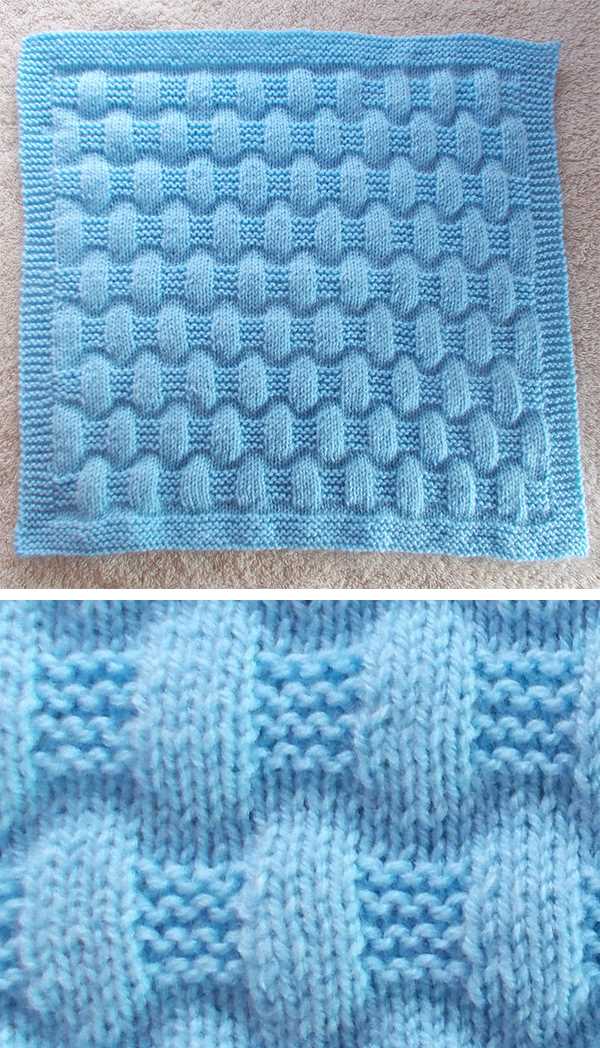
When it comes to knitting, having the right tools is essential. A good set of knitting needles and high-quality yarn can make all the difference in your knitting experience. Here are some must-have knitting needles and yarn that every knitter should consider:
1. Circular knitting needles
Circular knitting needles are a versatile tool that every knitter should have in their collection. They are ideal for knitting projects that require a large number of stitches, such as blankets or sweaters. Circular needles allow you to distribute the weight of your project evenly, making it more comfortable to knit for long periods of time.
2. Double-pointed knitting needles
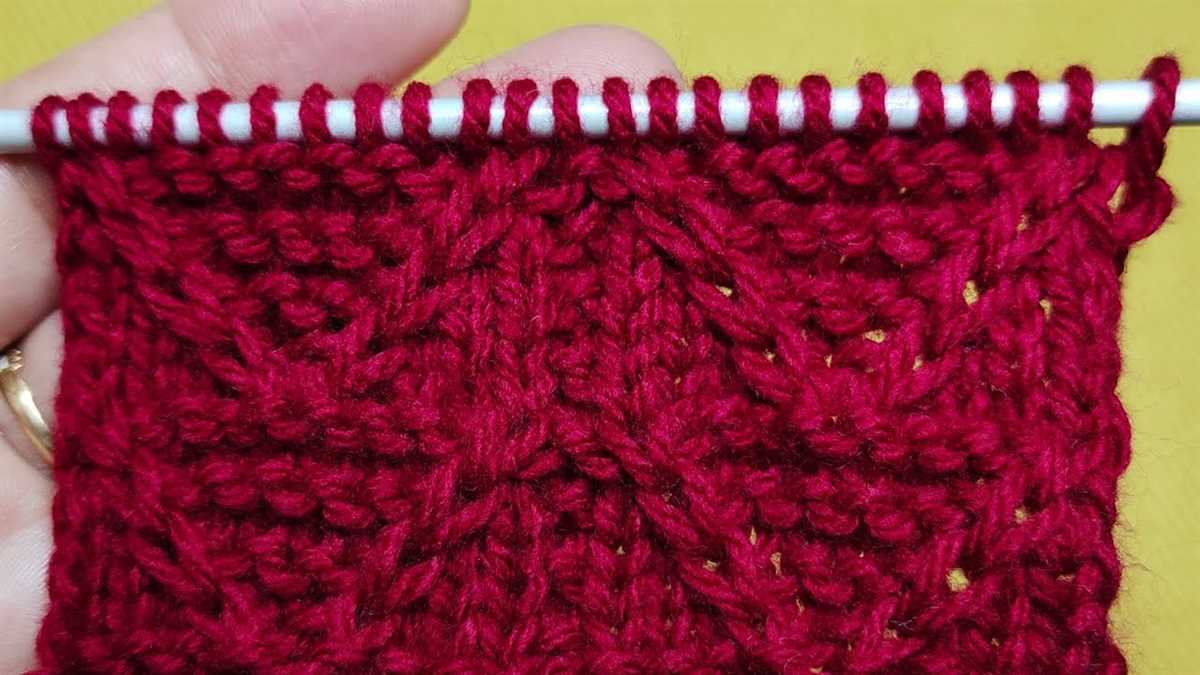
Double-pointed knitting needles are perfect for knitting small items in the round, such as socks or hats. They come in sets of four or five needles and are essential for projects that require knitting in a small circumference. Double-pointed needles allow you to easily switch between stitches, creating seamless and professional-looking finished products.
3. High-quality yarn
Using high-quality yarn is crucial for achieving beautiful and durable knitted items. Look for yarn made from natural fibers, such as wool or cotton, as they tend to have better stitch definition and drape. When choosing yarn, also consider the weight or thickness of the yarn, as this will determine the final look and feel of your project. Experiment with different types of yarn to find the ones that work best for your knitting style and desired outcome.
4. Stitch markers
Stitch markers are small circular markers that help you keep track of your stitches. They can be clipped onto your knitting needle to mark specific stitches or sections of your project. Stitch markers are especially useful when working on intricate patterns or when you need to keep track of increases or decreases. Invest in a set of stitch markers, and you will find that they can greatly improve your knitting accuracy and efficiency.
5. Yarn needles
Yarn needles, also known as tapestry needles, are necessary for weaving in loose ends and sewing up seams in your knitting projects. They have a large eye and a blunt tip, making it easy to thread the yarn and maneuver through your stitches. Having a set of yarn needles in different sizes can ensure that you always have the right tool for the job.
- Circular knitting needles
- Double-pointed knitting needles
- High-quality yarn
- Stitch markers
- Yarn needles
Helpful knitting accessories and tools
When starting out with knitting, it can be helpful to have a few essential accessories and tools to make the process easier and more enjoyable. These tools can help you keep track of your stitches, fix mistakes, and create professional-looking finished products. Here are some helpful knitting accessories and tools to consider:
Stitch markers: Stitch markers are small loops of plastic or metal that can be placed on your knitting needles to mark specific stitches. They can be especially useful when working on patterns with repeats or complex stitch patterns, helping you keep track of where you are in the pattern.
- Needle gauge:
Needle gauge: A needle gauge is a handy tool for determining the size of your knitting needles. It typically has holes or slots that correspond to different needle sizes, allowing you to easily identify the size of your needles. This is especially useful if you have a collection of needles and need to quickly find the right size for your project.
- Tape measure:
Tape measure: A tape measure is a must-have tool for any knitter. It allows you to accurately measure your knitting projects to ensure they are the correct size. Whether you’re measuring for gauge or checking the length of your finished piece, a tape measure will come in handy.
- Cable needle:
Cable needle: If you’re interested in knitting cable patterns, a cable needle is an essential tool. It is a short, double-pointed needle that is used to hold stitches while you cross them over one another to create cable patterns. A cable needle with a smooth surface and pointed ends will make it easier to manipulate your stitches.
These are just a few examples of helpful knitting accessories and tools. As you continue to knit and explore different patterns, you may find that additional tools such as stitch holders, row counters, and yarn needles become invaluable. Don’t be afraid to experiment and find the tools that work best for you and your knitting projects.
Basic knitting stitches for beginners
As a beginner knitter, it’s important to start with the basic knitting stitches that will form the foundation of your knitting projects. By mastering these stitches, you’ll be able to create a variety of patterns and designs. Here are three essential knitting stitches for beginners:
1. Knit Stitch
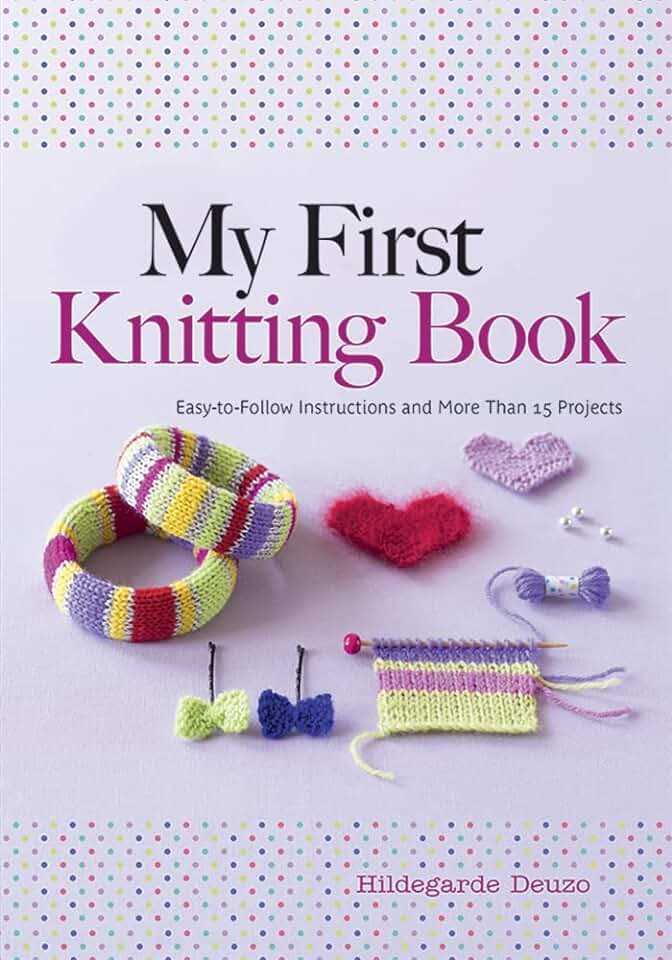
The knit stitch, also known as the garter stitch, is the most basic and commonly used stitch in knitting. To create the knit stitch, insert the right needle into the first stitch on the left needle from left to right. Wrap the yarn around the right needle and pull it through the stitch, slipping it off the left needle. Repeat this process for each stitch until you reach the end of the row.
2. Purl Stitch
The purl stitch is another fundamental knitting stitch that creates a smooth, bumpy texture. To knit the purl stitch, hold the yarn in front of the work. Insert the right needle from right to left into the first stitch on the left needle. Wrap the yarn counterclockwise around the right needle and pull it through the stitch, slipping it off the left needle. Repeat this process for each stitch until you reach the end of the row.
3. Stockinette Stitch
The stockinette stitch is a combination of knit and purl stitches and creates a smooth fabric with a distinct right side and wrong side. To knit the stockinette stitch, alternate between knitting one row and purling the next. This creates a pattern of knit stitches on one side and purl stitches on the other side. The right side of the fabric will have the smooth, V-shaped knit stitches, while the wrong side will have the bumpy purl stitches.
Once you’ve mastered these basic knitting stitches, you’ll have the skills to tackle more complex patterns and designs. Practice these stitches regularly to improve your knitting technique and create beautiful hand-knit items.
Learning Basic Knitting Abbreviations and Symbols
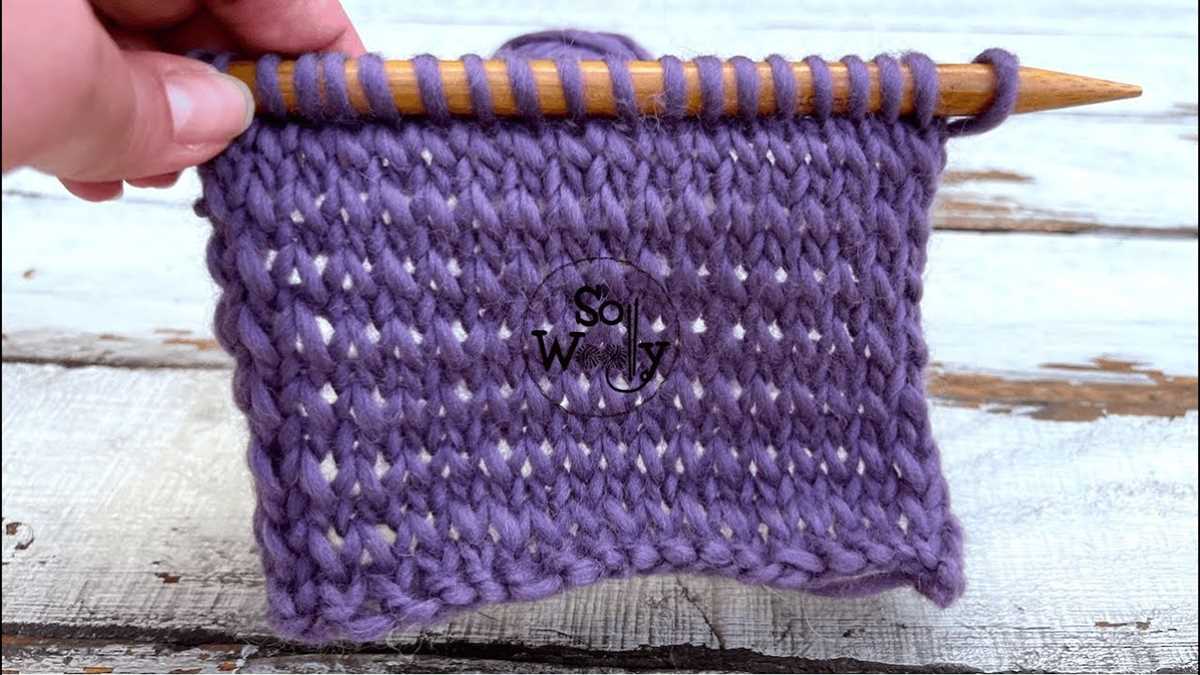
When starting out with knitting, it can be overwhelming to see all the different abbreviations and symbols used in knitting patterns. However, learning these basic knitting abbreviations is essential for understanding and following patterns correctly.
One of the most common abbreviations you will come across is “k” which stands for “knit”. When you see this abbreviation in a pattern, it means that you should insert the right-hand needle into the next stitch on the left-hand needle and bring the yarn through to form a new loop.
Another frequently used abbreviation is “p” which stands for “purl”. Purling is the opposite of knitting, where instead of inserting the right-hand needle into the stitch from the left, you insert it from the right and bring the yarn through the stitch.
Other common knitting abbreviations include “yo” which means “yarn over”, “k2tog” which means “knit two stitches together”, and “ssk” which means “slip, slip, knit”. These are just a few examples, and there are many more abbreviations and symbols you may come across in knitting patterns.
It’s important to note that different knitting patterns may use slightly different abbreviations, so it’s always a good idea to familiarize yourself with the specific abbreviations and symbols used in each pattern before starting. Once you have a good understanding of the basic knitting abbreviations, you’ll be able to confidently tackle a wide range of knitting patterns, from simple scarves to more complex projects.
Choosing the right yarn for easy projects
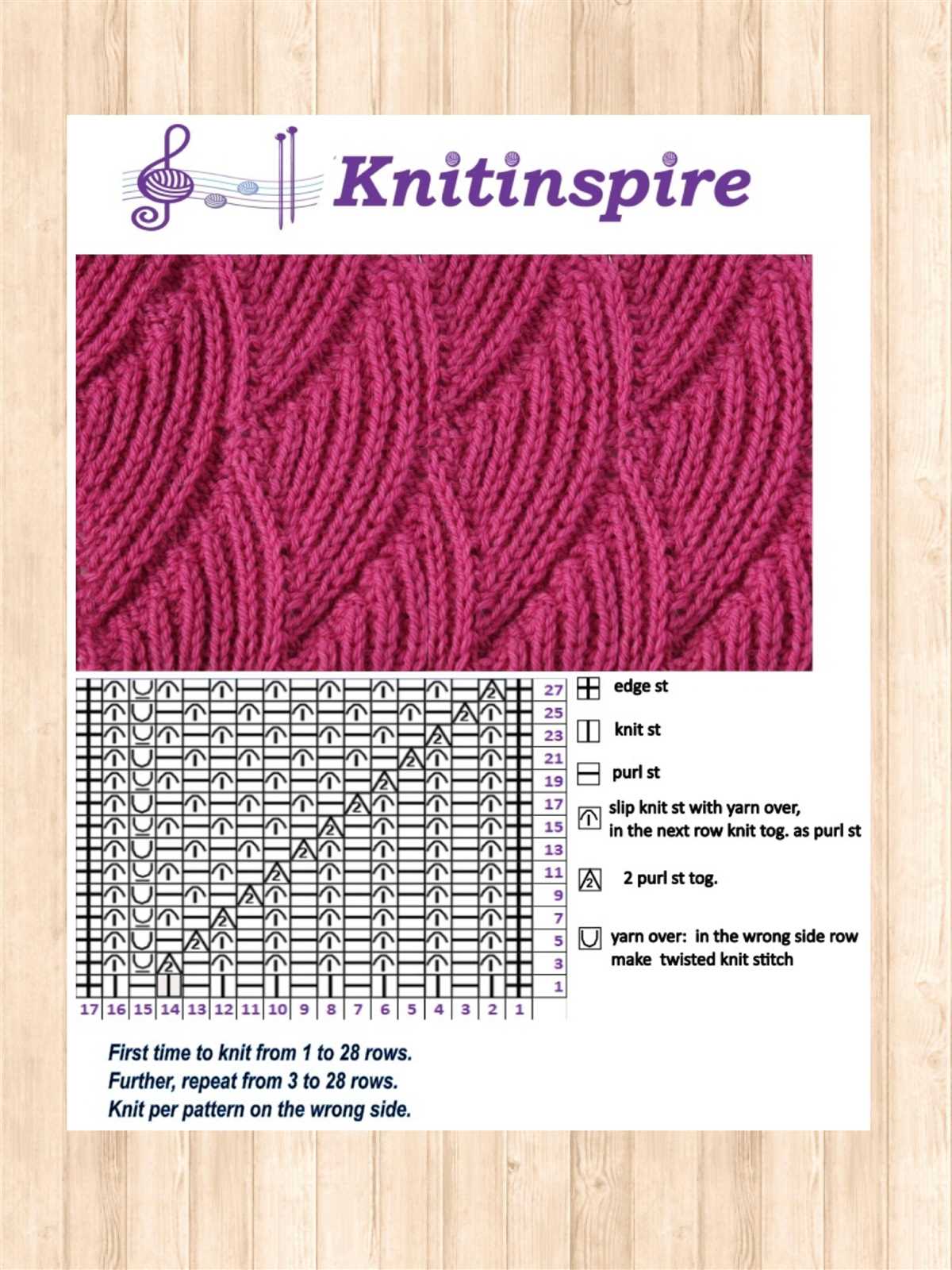
When starting out with knitting, it is important to choose the right yarn for your easy projects. The yarn you choose can greatly affect the outcome of your project, so it is worth taking the time to consider your options.
1. Weight: One of the first things to consider when choosing yarn is the weight. For easy projects, it is usually best to start with a medium or bulky weight yarn. These yarns are easier to work with and allow you to see your stitches clearly. They also make your project work up faster, which can be encouraging for beginners.
2. Fiber: The fiber content of the yarn can also make a difference in your easy projects. Natural fibers such as wool, cotton, and silk can be wonderful to work with and create beautiful results. However, they may require more care in terms of washing and blocking. Synthetic fibers like acrylic or nylon can be a great choice for easy projects as they are often machine washable and durable.
3. Texture: The texture of the yarn can also add interest to your easy projects. Smooth yarns can be easier to work with as they glide over your needles smoothly. However, textured yarns such as boucle or chenille can create interesting effects and add texture to your finished project.
4. Color: Finally, consider the color of the yarn. Easy projects are a great opportunity to experiment with different colors and create something fun and eye-catching. Look for yarns with variegated or self-striping patterns to add visual interest to your project.
Overall, choosing the right yarn for your easy projects is a personal decision. Consider the weight, fiber, texture, and color that you prefer and experiment with different options to find what works best for you. With the right yarn, you can ensure that your easy projects turn out beautifully and that you enjoy the knitting process.
Understanding different types of yarn
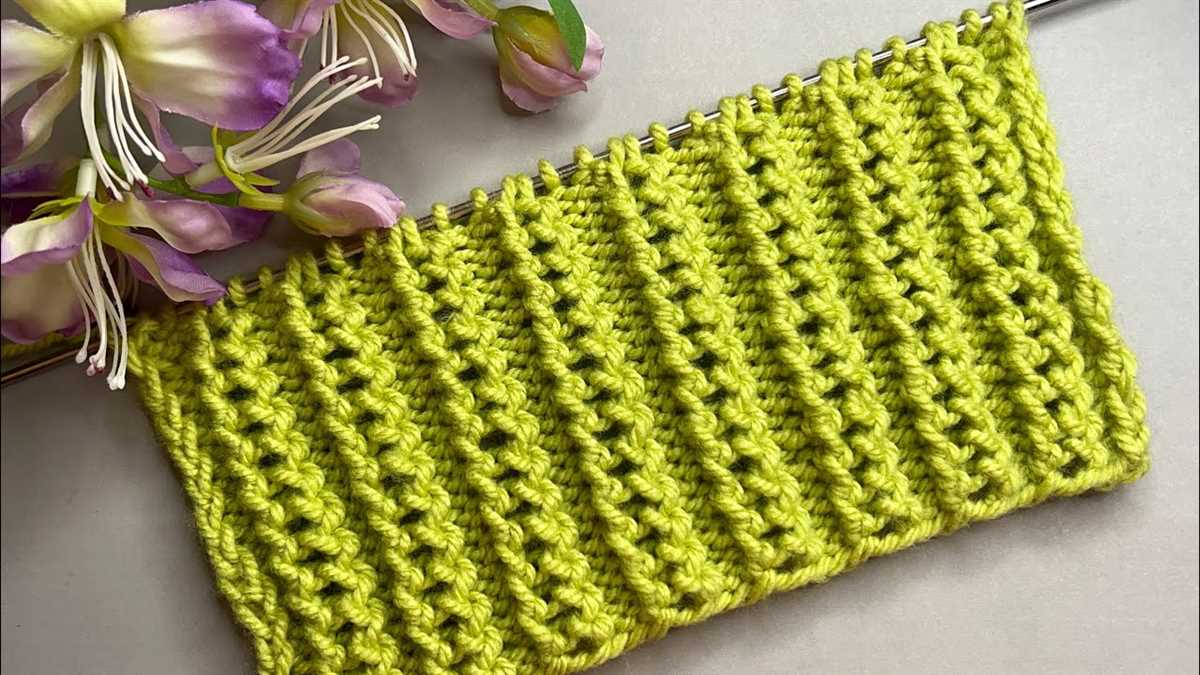
When it comes to knitting, understanding the different types of yarn is crucial for selecting the right material for your project. Yarn comes in various fibers, weights, and textures, each offering unique qualities that can enhance or detract from the final outcome of your knitting project.
Fiber types: Yarn can be made from a wide range of fibers, including natural materials like wool, cotton, and silk, as well as synthetic fibers like acrylic and nylon. Each fiber has its own set of characteristics that affect the feel, durability, and care requirements of the finished knitting piece.
Types of yarn fibers:
- Wool: Wool yarn is warm, elastic, and moisture-wicking, making it ideal for knitted items like sweaters and blankets.
- Cotton: Cotton yarn is lightweight and breathable, making it suitable for warm-weather garments and accessories.
- Silk: Silk yarn has a luxurious feel and drape, making it perfect for elegant and delicate projects like shawls and scarves.
- Acrylic: Acrylic yarn is affordable, easy to care for, and comes in a wide range of colors, making it popular for beginners or projects that require frequent washing.
- Nylon: Nylon yarn is often blended with other fibers to add strength and durability, making it suitable for items that need to withstand heavy use.
Yarn weights: Yarn is categorized into different weights, ranging from lace weight (the thinnest) to super bulky weight (the thickest). The weight of the yarn affects the size of the needles and the overall appearance and drape of the knitted fabric.
Texture: Yarn can also have different textures, such as smooth, fluffy, or boucle. Texture can add visual interest and affect the stitch definition of the knitted fabric.
In conclusion, understanding the different types of yarn is essential for selecting the right yarn for your knitting project. Consider the fiber type, weight, and texture to ensure that the yarn complements your desired outcome and meets the specific needs of your project.
Selecting appropriate yarn weights and fibers for beginners
When it comes to knitting, one of the most important decisions beginners need to make is selecting the right yarn weight and fiber for their projects. The yarn weight refers to the thickness of the yarn, while the fiber determines its composition and characteristics. Choosing the appropriate yarn weight and fiber is crucial for achieving the desired results and ensuring a smooth knitting experience.
Yarn weight: For beginners, it is generally recommended to start with a medium or bulky weight yarn. These yarns are thicker and easier to handle, making them ideal for practicing basic knitting stitches. Lighter weight yarns, such as lace or fingering weight, are more delicate and require more precision, which can be challenging for beginners. Medium or bulky weight yarns also work up faster, providing a sense of accomplishment and motivation.
Yarn fiber: When it comes to fiber, there are various options to choose from, each with its own characteristics and properties. Acrylic yarn is a popular choice for beginners as it is affordable, readily available, and easy to care for. It is also quite forgiving, making it easier to correct mistakes. Another beginner-friendly option is cotton yarn, which is soft, hypoallergenic, and great for projects like dishcloths and baby items. Wool yarn, on the other hand, is known for its warmth and elasticity, but it may be more challenging for beginners to work with due to its tendency to felt.
It is also important to consider any specific requirements or preferences for the project at hand. For example, if you are making a blanket or a sweater, you may want to choose a yarn fiber that provides warmth and comfort. If you are making a scarf or a shawl, you may want to choose a yarn fiber that provides drape and softness. Taking these factors into consideration will help you select the appropriate yarn weight and fiber for your specific knitting project and ensure a successful and enjoyable knitting experience.
Beginner-friendly knitting patterns for scarves
Knitting is a popular craft that allows for endless creative possibilities, and making scarves is a great way to start your knitting journey. Scarves are perfect for beginners as they typically involve basic stitches and simple patterns. Whether you’re new to knitting or looking for an easy project, here are some beginner-friendly knitting patterns for scarves.
Garter Stitch Scarf
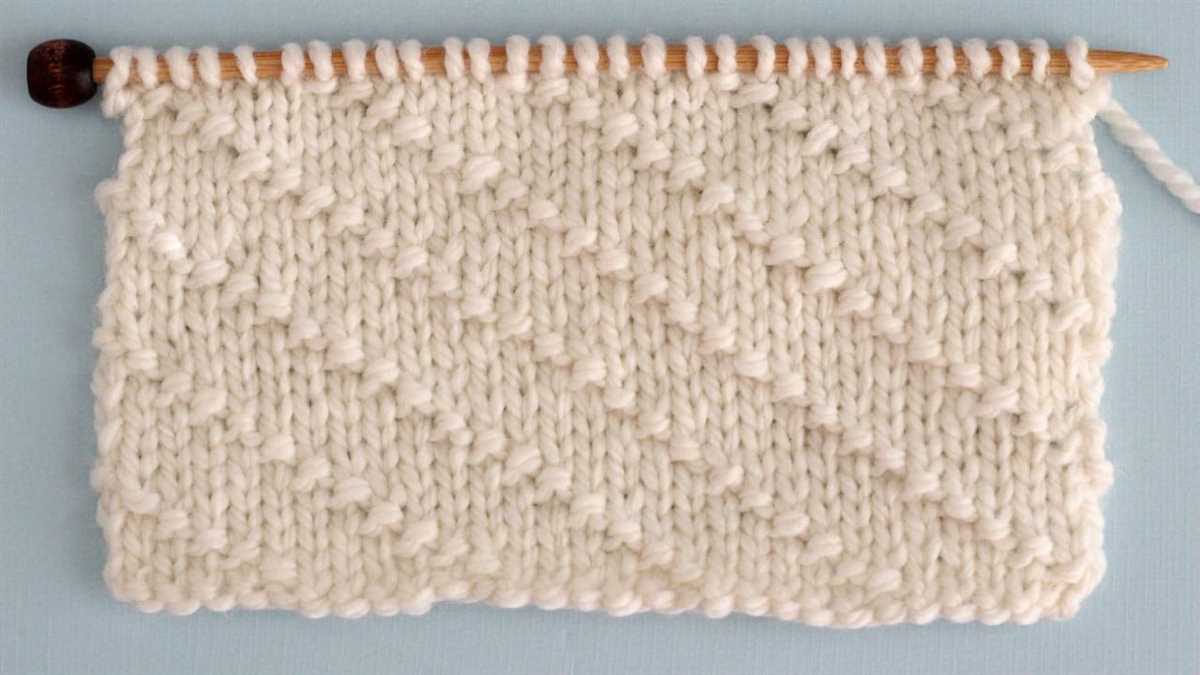
The garter stitch is one of the simplest and most common knitting stitches, making it an ideal choice for beginners. To make a garter stitch scarf, all you need to do is knit every row. This simple pattern creates a scarf with a bumpy texture and is perfect for showcasing the beauty of your yarn. You can choose a chunky yarn to make it extra cozy for the winter season.
Ribbed Scarf
A ribbed scarf is another easy pattern for beginners. The rib stitch creates a stretchy and textured fabric that is visually appealing. To make a ribbed scarf, you alternate between knitting and purling stitches in a specific pattern. This pattern is great for learning new stitches and can be easily customized by changing the width or length of the ribs.
Seed Stitch Scarf
The seed stitch is another simple and beginner-friendly pattern that creates a textured and reversible fabric. To make a seed stitch scarf, you alternate between knitting and purling one stitch at a time. This pattern is great for adding visual interest to your scarf and can be made with any type of yarn. You can even experiment with different colors to create a striped or ombré effect.
These are just a few examples of beginner-friendly knitting patterns for scarves. The key is to start with simple stitches and patterns and gradually challenge yourself as you gain more experience. Remember to choose yarn and needles that are suitable for your chosen pattern and take your time to enjoy the process of knitting. Happy knitting!
Conclusion
Knitting a simple garter stitch scarf is an excellent project for beginners. With just two basic stitches, you can create a beautiful and functional accessory. Whether you are looking to learn a new skill, make a handmade gift, or add a cozy accessory to your wardrobe, this pattern is a great place to start.
This pattern is versatile and can be customized to fit your style. You can experiment with different yarn weights and colors to create your unique scarf. You can also add fringe or other embellishments to make it more personal. The possibilities are endless!
Remember, the key to successful knitting is practice and patience. Don’t worry if your first attempts are not perfect. With time and experience, your skills will improve, and you will be able to tackle more complex projects.
So grab your knitting needles and some yarn, and start your knitting journey with this simple garter stitch scarf pattern. Happy knitting!